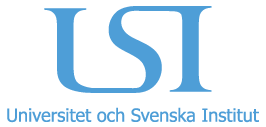This course discusses the relation between multilingualism and mobility, with a focus on Istanbul – from the Ottoman era to today.
People’s mobility is influenced by political, economic, legal, cultural and technological conditions. At the same time, people’s mobility plays a key role for the development of multilingualism for each individual as well as for the society in which we live.
We will explore these complex connections between multilingualism and mobility. We will compare different periods in the history of Istanbul and relate the case of Istanbul to other cities in Sweden and other parts of Western Europe.
The course begins with an introduction week at your home university in Sweden. Three weeks of preparation will then be followed by two weeks in Istanbul with teaching, visits and field work. You will have the opportunity to discover and document different aspects of Istanbul’s mobility and multilingualism. You will meet speakers of old and new minority languages and visit multilingual districts, places of work, schools, and universities.
The course ends with seminars at your home university in Sweden where you present and discuss you research paper.
This course is primarily intended for students of the humanities and the social sciences, but all students with a completed bachelor degree and an interest for multilingualism and international migration are welcome to participate.
Istanbul – between two worlds
At several occasions in Istanbul’s history, the town has been one of the world’s most densely populated. The town has functioned as a constant hub in people’s movements between Asia, Europe and Northern Africa. In its capacity as a former capital of three multi-ethnic empires the town has attracted various groups with many different languages. The Ottoman era was characterised by a great tolerance towards the culture and language of different ethnic groups. By the end of the 19th century Istanbul was one of the most multicultural and multilingual cities in Europe and the rest of the world. However, in the first decades of the Turkish Republic the variety and diversity in Istanbul decreased radically. By the 1960’s the multilingualism started to recover to some extent, thanks to internal migration and the increasing mobility in Turkey’s neighbouring surroundings after 1990. At the same time Turkey has experienced a transformation from a country of emigration to, first, a transit country for migration, and lately also an immigration country in the making. Istanbul, as the country’s economic centre, faces challenges today similar to those of other Western European cities with large groups of new migrants of varying legal status.
| Study venues:Stockholm/Linköping/Umeå and Istanbul |
Contact |
| Language:Swedish/English | Memet Aktürk Drake– Stockholm |
| Period: This course is no longer offered by USI |
08-16 14 01 |
| Pace:Half | Zoran Slavnić – Linköping |
| Application: This course is no longer offered by USI |
011-363 211 |
| Lena Granstedt – Umeå | |
|
090-786 56 80 |


